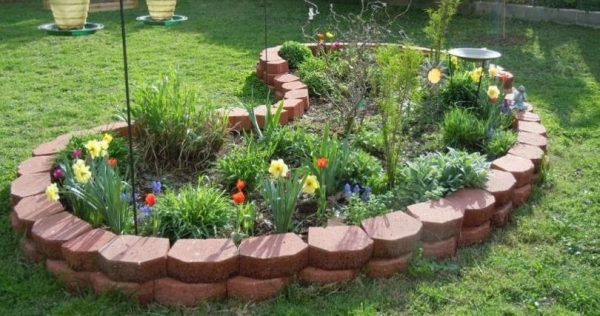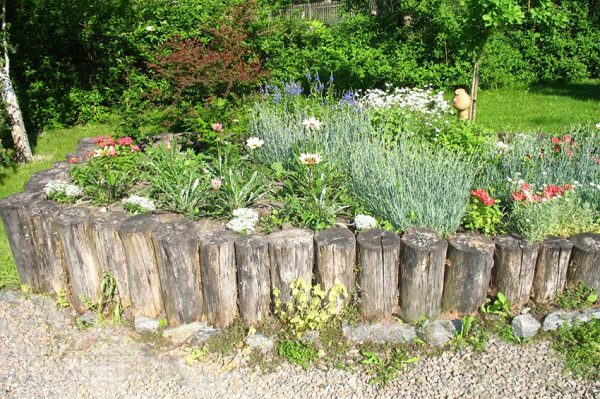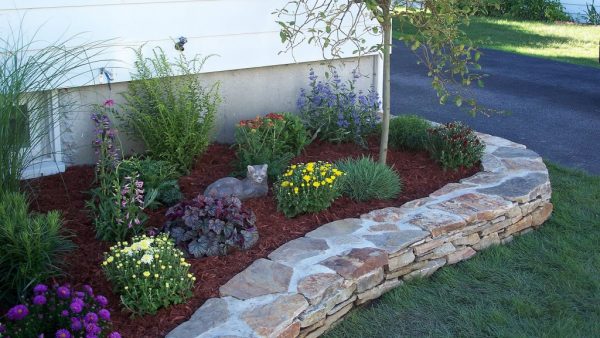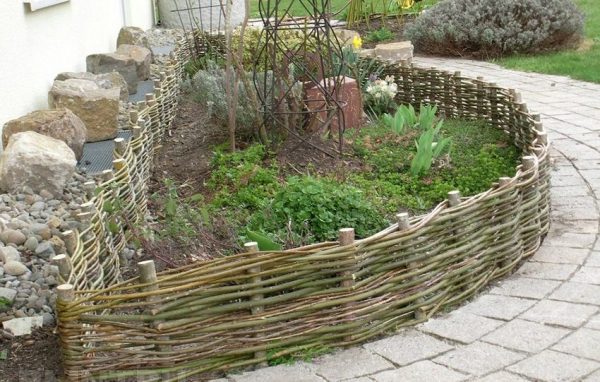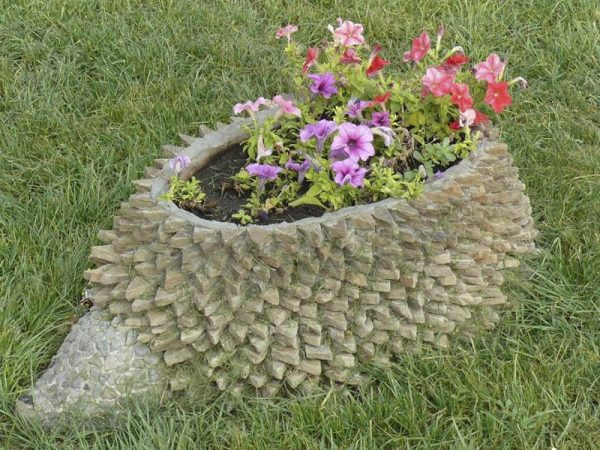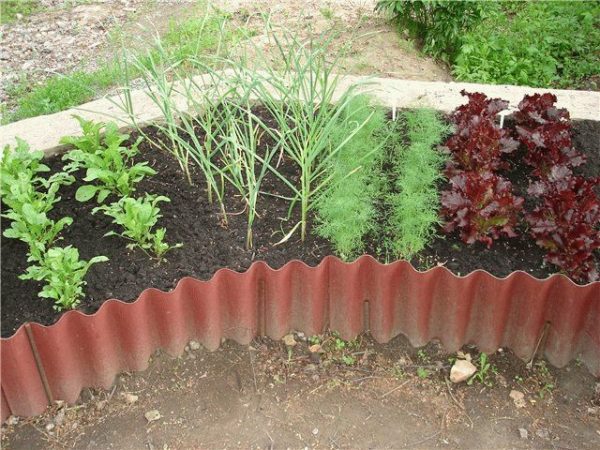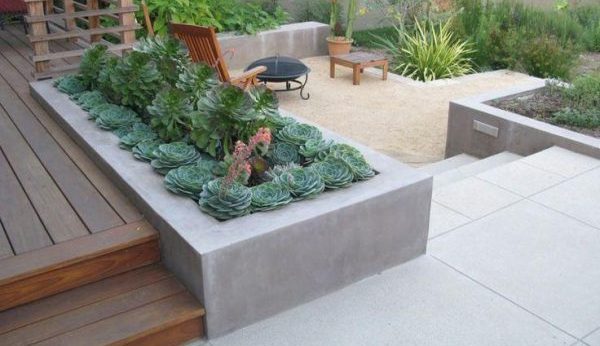Fencing a flower bed with your own hands from scrap materials
Content
How to choose a fence
All kinds of fences are quite easy to make with your own hands from scrap materials. They use plastic bottles, stones, bricks, iron pipes, trees, in general, everything that can be found. They are also used to divide flower beds into zones when it is necessary to emphasize certain features of the flower garden.
When choosing a fence, analyze what kind of plants you will be planted. If there are mainly plants that love moisture, then you should not use wood, it is better to build fences from iron pipes, stone or plastic. If flowers that love dry soil and an abundance of sunlight prevail, then wooden, stone, plastic components will be used. The choice of materials also depends on the design you come up with - iron and stone fences are more suitable for a desert composition; for a rustic pastoral composition - brick, stone, wood.
If the fence performs a decorative function, then you should give preference to a small fence with a height of 6-8 cm. For the curbs along the paths, you should choose a stable structure with a height of 10 cm or more. Brick and stone fences are built around flower beds raised above the ground.
If you need to protect flowers from uncontrolled growth, then plastic, iron nets or brickwork will come to the rescue. To protect against children and pets, you will need high fences, at least 40 cm in height, - wood, plastic or forged metal. As you can see, most flower beds can be beautifully edged with the help of materials at hand.
Materials (edit)
Once you have decided on the functional purpose of the fence, you should attend to the selection of materials. Slate - before use, it should be cut to the required size, trying not to make the segments too narrow and long, in order to avoid breakage. Wood - driftwood, twigs, lumps, picket fence. First, you should clean the raw materials from the tree from the bark and treat with antiseptic agents to prevent the formation of microbes, rot, and beetles.
Stone - both decorative stones and ordinary ones, which can be found in abundance near reservoirs or quarries, are suitable. Before use, they should also be treated with antiseptics, and subsequently thoroughly cleaned of lichen and moss. Brick - both whole bricks and their fragments will do. If you wish, you can dig brick blocks into the ground or build walls out of them with your own hands.
Concrete - Concrete fences are used quite often due to their high functionality and durability. Plastic - in the form of a mesh or plastic picket fence is suitable for temporary fences that can be easily carried from place to place. Car tires - use both separate places for flower planting and for framing large flower beds.
Discs, vinyl records are a very original way to create a fence for a flower bed.Agree, you rarely see this. There is really an incredible amount of available materials and only an inopportunely hibernating imagination can stop you in search of your original solutions.
Video "A flower bed of stones with your own hands»
Video selection of examples of how to create a flower bed from stone.
DIY fence options
You already know that you can build a fence with your own hands from scrap materials. Let's now take a closer look at the working options that will serve as the basis for your own experiments.
Wooden fences
There is nothing simpler and more sophisticated than a hand-made wooden fence. Natural material will look good in all conditions. And given the fact that over time the tree decays - in a few years the earth will receive high-quality fertilizer.
Traditionally, a picket fence is used to create a fence for flower beds. You can control the height of such a fence, moreover, you do not need to have special skills to create it with your own hands. Adjust the picket fence in height, connect it to each other with a transverse board, and then nail it to the bases previously driven into the ground.
Wicker fences made of willow vine are no less popular. You will need a large number of vines to be barked off, base pegs driven firmly into the ground, and some time to weave. Pass the vine between the driven pegs, braiding them, secure the ends of the lashes with nails.
A do-it-yourself curb from chocks is another option for a wooden fence. First, pick up the right amount of wood logs of the same diameter. Dig a trench around the flower bed, add sand there and drive the chocks into the ground, tamping them tightly together. Then fill up the earth to level the earthen part of the fence and tamp it tightly.
You can also use driftwood to create an original fence. Dig in and tamp the driftwood around the flower garden, stacking them one on top of the other. Remember that most wood components must first be barked and treated with an antiseptic.
Stone and brick fences
You can create fences from stones of the correct or irregular shape. They won't stick together so easily, so use cement to form the fence. For high fences (more than 30 cm), flat stones are used, since they are stronger adhered to each other. Choose the size of the stones according to your wishes. Getting creative with stone flower gardening is encouraged by modern stone production - you can incorporate glowing stones into your masonry or create patterns from small stones.
Another option is brickwork. Firstly, brick blocks come in different colors, so it will not be difficult to find the perfect match for the color palette of the flower garden. Secondly, the bricks adhere much better to each other, allowing you to create tall, neat, stable structures. However, it is possible not to cement the brickwork, but to dig individual blocks into the ground - alternately laying them with an edge on the ground.
Music disc fence
Probably many of us made flower pots from vinyl records that were carefully heated over a fire. This is not their only secondary use. You can decorate with both CDs and vinyl records. Fasten together a section of 6 discs one by one (using glue, for example), and then fix them on pegs previously driven into the ground. You will get a rather original design, created by your own hands, which on clear days will fill your garden with sunny bunnies.
Car tires as a guardrail
The use of car tires is another option to create a fence with your own hands. They can be dug ⅓ into the ground, and then painted in bright colors. Or arrange a separate flower garden inside each tire, so that later you can build a pyramid.Keep in mind that such a decor will require a large flower garden, otherwise it will not look very beautiful.
Slate fences
Scraps of slate can be found, probably, in any shed. By dividing them into separate segments, you can dig the fragments into a small trench and prop them up with rods - you get a standing fence. Or you can lay out the border of the flower garden with pieces of slate, creating a kind of panel. Remember that when using slate, you cannot make too narrow or long segments, since it will burst under load.
Bottle fence
The king of improvised means is plastic or glass bottles. In order to make a fence with your own hands, you will need a large number of bottles and sand. Wash them, remove the labels, fill them with sand, and dig them upside down around the flower garden. Such a fence will not require a lot of time and effort, but it will look neat and unusual. It is best to use brown or green glass bottles.
Concrete fence
It is a little more difficult to make a concrete fence with your own hands than from bottles or wood, but at the same time the functionality of the structure increases significantly. You can also use ready-made concrete blocks or rings, digging them into the ground, in order to then fill with fertilized soil. The strength of such structures depends mainly on the quality of the bonding material, glue or cement, as well as on the overall quality of the concrete.
Video "Flower beds from scrap materials"
Examples of how to create decorative flower beds with your own hands.

